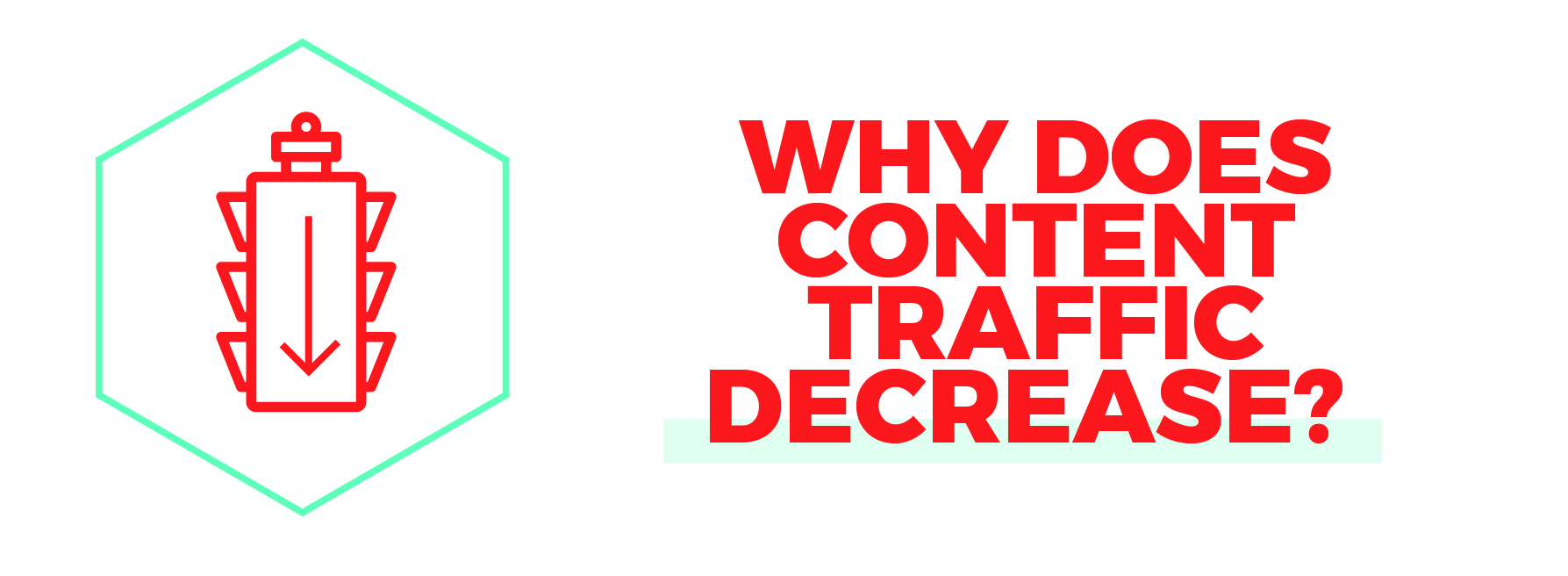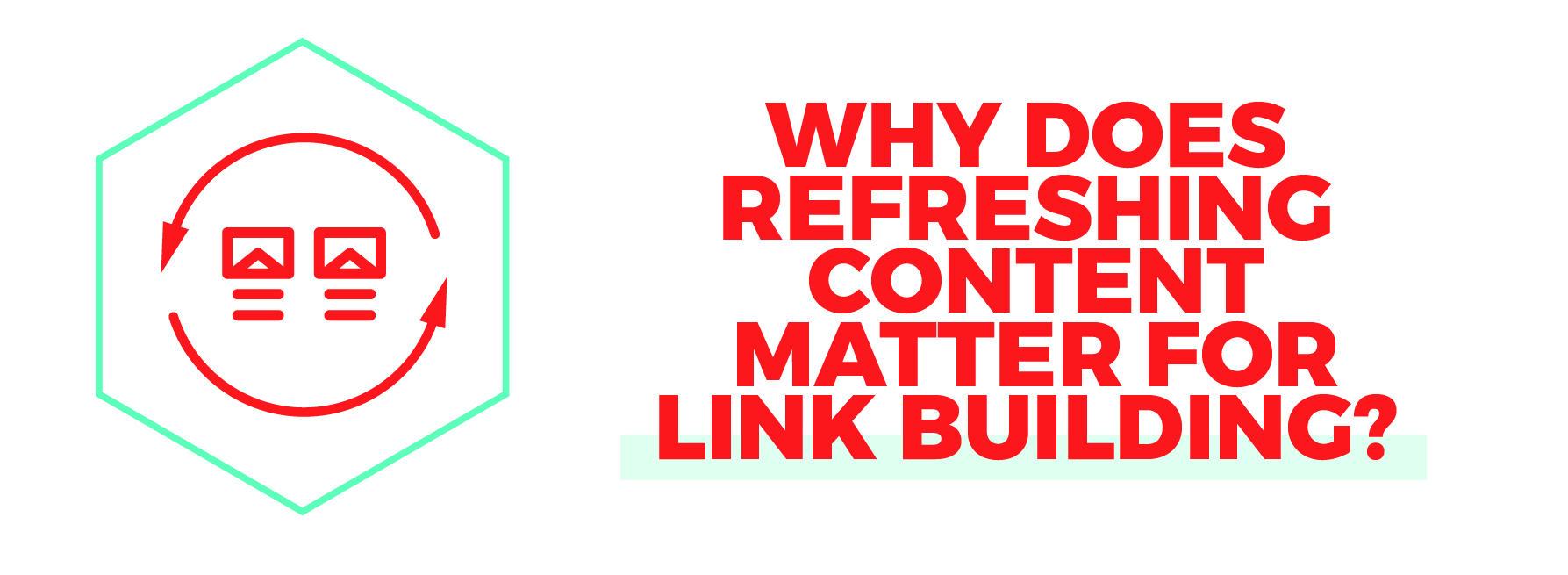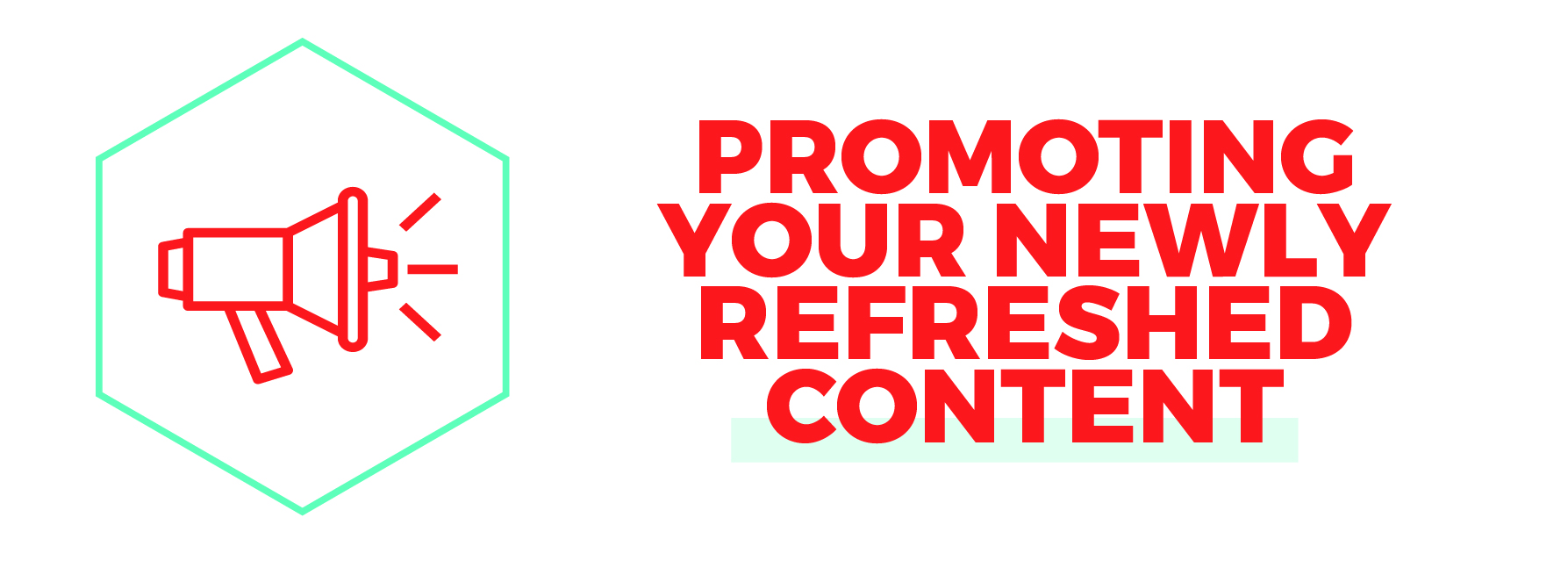Google’s algorithms assess and rank billions of web pages. They rank pages that are relevant to search queries, don’t rank pages that are less relevant, and penalize those that are low quality or attempt to subvert Google’s guidelines.
While Google’s ranking algorithms are confidential and continuously evolving, they ultimately perform a single task: leading users to relevant pages that offer a high-quality user experience.
Content plays an essential role in Google’s ranking systems. Internet users want relevant, useful, informative, up-to-date, and easy-to-read content—and Google’s algorithms are tuned to deliver that while excluding content that does not satisfy users.
Thin, outdated, redundant, and poorly-written text will negatively impact a site’s SEO performance, leading to low page rankings, decreased traffic, and fewer conversions.
A useful strategy for increasing page traffic is performing a content refresh.
The typical purposes of a content refresh are to:
- Bring the content up to date,
- Sharpen the focus so that it’s more tightly relevant to what users want, and
- Make thin pages more useful by adding more content.

All online content, no matter how well-executed, goes through natural peaks and troughs in traffic.
However, there’s a distinction between normal traffic fluctuation and page visits dropping off because of outdated content.
Successful content typically undergoes a predictable life cycle with the following phases:
- Initial Spike– Content, when published, experiences an influx in traffic.
- Anticipated Stagnation– After a while, traffic drops and remains stagnant because the content is no longer current or topical.
- Pageview Growth– Over the course of a few months, pageviews gradually increase as the result of keywords, backlinks, and growth in user popularity (and recommendations).
- Plateau– The gradual period of growth hits its ceiling, and traffic remains consistent.
- Drop Off– The effects of time take a toll, and traffic drops off. (Not all content experiences this phase, though many pages eventually experience a drop-off.)

The five phases of the content lifecycle, as described above, occur naturally—even for pages with relatively high-quality content.
In general, fluctuations occur as content becomes harder for users to find. A few significant forces that lead to a decline in traffic include:
- About topics that require freshness—
-
- Some topics are in constant change, either because of innovation, time-related, or seasonality.
-
- Topics that require freshness may need to be updated more frequently or once a year
-
- Some topics lose relevance because of time and cannot be refreshed, particularly for products with new models. Sometimes it’s best to update the page and retain all the link equity the page contains.
- Higher Competition– As more competitor websites publish content targeting the same keywords, it becomes harder for a page to rank. This is a given and the natural state of the web.
- Changes in Google’s SERPs–When Google rolls out algorithmic updates, search engine results pages can change as Google sharpens its understanding of how search queries are relevant to web pages.
- Overall Website Quality– Website performance metrics, such as loading speed can affect the success of individual pages. A decreased flow in link equity can also negatively impact a page’s traffic.

Performing a content refresh entails identifying outdated or weak pages on a website and adding value to the existing content. If optimized correctly, the refresh should naturally increase the page’s performance.
Note: Some pages are on topics that are not particularly popular and those pages can’t ever be made to increase traffic. But that doesn’t mean they are of low quality. It just means the topic is not popular and the search volume is naturally low.
- Google ranks high-quality content that is relevant to user search intent.
- The acronym E-A-T represents the characteristics of quality, high-ranking content: expert, authoritative, and trustworthy.
The content refresh process begins by determining which pages do not adequately match users’ search intent and analyzing why those pages fail to be relevant.
Addressing those shortcomings helps a web page better meet the E-A-T standard.
Identifying Pages for Content Refresh
Content can almost always be improved. The only content one might hesitate to “improve” is content that is already top-ranked.
Look for the following when selecting content to refresh:
-
- Thin Content– Google penalizes content that doesn’t fulfill a need or serve or a purpose. Telltale signs of “thin” content are low word count and redundancy.
A simple way to locate thin pages is running a content audit using a tool such as Screaming Frog SEO Spider that can sort pages on a website by their word count.
That said, thin content isn’t necessarily content that has a low word count. Thin content can be a page that is templated and is a semi-duplicate of other pages. A lack of uniqueness or the superficial coverage of a topic defines what thin content is.
-
- Declining Traffic– As previously mentioned, dips in traffic along the content lifecycle are to be expected. However, consecutive months of declining traffic is a flag that something is wrong.
What’s wrong can be a change in user search trends, a loss of links to the page or perhaps another site is producing more relevant content.
-
- Duplicate Content– Content that’s repeated within a single website hurts overall SEO and can create a negative impression on users.
- Evergreen Content– Evergreen content is pages that remain useful and relevant to users despite the passage of time.
If the traffic or rankings can be improved then it’s a good idea to take a second look. Adding more relevant images or helpful step by step illustrations can help an evergreen page of content attract more site visitors. The goal of refreshing evergreen content is to make it more useful to users.
Adding Value Through a Content Refresh
Every modification you make to a page should serve a single purpose: adding value to what already exists. Effective strategies for adding value include:
-
- Updating– Replacing outdated statistics with new data, finding newer resources to link to, mentioning recent developments, modernizing the page aesthetic, making the page more useful.
- Expanding– Generating new sections of relevant content or adding details such as examples, references, statistics, quotes, images, videos, tutorials, and diagrams.
- Optimizing– Improving content SEO is about changing the page’s content in response to new information about user search intent so that the content better serves the users’ needs.
Shortening lengthy sentences and paragraphs help make the content easier to understand for both users and search engines. A sharp focus on the page topic is always a good approach.
-
- Combining– Condensing pages with similar content into a single optimized page.
- Adding Assets– Adding assets such as tools, infographics, downloads, and videos.

Refreshing content increases site performance through added value, freshness, and relevance—but you can also leverage the process to help meet your link building goals.
Refreshing Internal Content
When you refresh a page’s content, it creates more opportunities for backlinks. Independent websites look for useful, authoritative content to link to. If your content refresh transforms poor-performing pages into valuable resources, you’ll naturally earn more backlinks.
The refresh process also lends itself to the link building email outreach process. Improving and expanding content creates new opportunities for outreach and improves the success of your pitches.
Refreshing pages that already have backlinks can help to retain those links, better serve users who discover your pages through those links, and continue to pass link equity to your other pages.
Refreshing External Content
After you’ve performed refreshes on your own content, you can also reach out to blogs within your niche and offer your services.
Every blogger or site manager wants their content to attract readers and rank well; however, not everyone has the time or know-how.
To build links through external content refreshes, follow these steps:
1. Look for blog posts that discuss topics, products, and services relevant to your brand.
2. Reach out the writer or site editor and offer to update or expand the page. Be sure to express your intent clearly: you want to add value to their page through the refresh and include a link to your website.
Explain that you’re invested in the success of their blog, and want to perform a mutually beneficial service.
3. Perform the content refresh while maintaining the integrity of the original article. The goal is to improve the page, not make it your own entirely.
Every change made should add value that the blogger will recognize. If they’re happy with your work, they may even recommend your services to other bloggers in their online community.
4. Include a link to a strategically selected page on your website. Make sure the reference to your site fits in contextually and that the anchor text flows naturally.
5. Return the expanded content to the blogger, and follow up to make sure the refresh is published.

A successful content refresh doesn’t end when you hit “publish” on the updated page. The page may benefit from telling others about the improved web pages.
In addition to link building email outreach, consider a few other marketing strategies, such as:
- Sharing the refreshed page on social media,
- Linking to the content in your daily newsletter,
- Running a Google Ads campaign,
- Building internal links to the page, and
- Linking to the page via other assets such as YouTube videos and podcast notes.

Within competitive industries and quickly-evolving fields, keeping up with current trends, events, research, and insights can prove challenging.
Some topics may require their own dedicated posts. But some updates can be amended to existing pages.
Refreshing and expanding old content not only improves page performance but also improves the user experience, helping to make your site more popular.
Performing content refreshes maximizes the usefulness of a page, resulting in better rankings, more traffic, and increasingly satisfied users.




